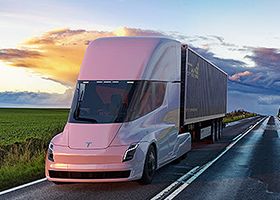

According to the American Trucking Associations (ATA), at current trends the driver shortage could surpass 160,000 by 2030. ATA estimates that, in the next decade, the industry will have to recruit nearly a million new drivers into the industry to replace drivers exiting the field due to retirements, driver burn-out, compensation and poor benefits. These are the challenges facing transportation executives in securing a robust driver pool.
However, the challenge of driver shortages does not end with the trucking industry. Rather, the scarcity of drivers directly affects the larger manufacturing sector.
To read the full article click here.



A long-haul truck cruises by you on Interstate 10 in west Texas. You get a brief wave from the driver who seems unfocused on the road ahead. It’s hot and the road is bumpy. You didn’t realize it but you just encountered an autonomous driving truck in development, testing out the latest version of its Artificial Intelligence algorithms. The truck is loaded with unseen video cameras, lidar, radar and infer-red sensors. As it travels along it is seeing its environment and its on-board computers are making the thousands of little decisions that keep it moving safely to its prescribed destination. The driver is a safety layer that will be removed in future iterations of the design.

Adoption of the latest HPC and AI technologies in autonomous vehicles is creating a surge in vehicle real-time data processing capabilities. The growth in number, speed and resolution of vehicle sensors and related compute performance in autonomous vehicles has in turn led to increased demand for high-capacity, high-throughput storage. Effective storage within autonomous vehicles must meet three primary criteria: throughput to match the capture and processing rates, a rapid data transfer workflow for offloading the captured data, and a rugged environmental design to operate in any autonomous vehicle conditions.
To read the full article click here.